Engadget RSS Feed |
- Telegram's video calls can now accommodate up to 1,000 viewers
- 'Horizon Forbidden West' is reportedly delayed to 2022
- Twitter launches bug bounty contest to detect algorithmic bias
- US watchdog rejects Blue Origin’s protest of NASA lunar lander contract
- This toe tickling navigation system will help the visually impaired walk tall
- Spotify's Noteable Releases playlist showcases the songwriters behind popular music
- Why Tesla is delaying the Semi EV until 2022
- Samsung's 'history of electronics' animated videos seem like great sleep aids
- This week's best deals: $150 off Apple's MacBook Air M1 and more
- Apple TV+’s 'Watch the Sound' is an invitation to start making music
- NYC extends limits on food delivery app fees to February 2022
- Amazon handed record $888 million fine from EU data privacy watchdog
- Engadget Podcast: Activision’s walkout and toxicity in gaming
- Two red objects between Mars and Jupiter may explain how the solar system formed
| Telegram's video calls can now accommodate up to 1,000 viewers Posted: 30 Jul 2021 09:10 PM PDT Telegram has expanded the group video calling feature it launched in June to be able to accommodate more participants — a lot more. The latest version of the messaging app now allows up to 1,000 people to join a group video call. While the number of participants that can broadcast video from their camera or their screen remains capped at 30, an additional 970 people can tune in and watch. As Telegram said when it first launched the feature, it was always planning on increasing the number of people that can join a group chat as it expands its voice and video calls to support live events. In its new announcement, the company said it'll keep on increasing the limit. In addition, Telegram has updated the video messaging feature so users can watch them at a higher resolution. Users can now also share their screen with sound during 1-on-1 video calls and set their messages to auto-delete after one month instead of within a day or a week like the older options allowed. Telegram's updated media editor makes the brush width smaller upon zooming in, allowing users to draw finer details on photos and videos. Other new features include more password reset options and animated emoji. For the Android app, the latest version also includes support for 0.5x, 1.5x and 2x playback speeds, as well as new sending animations. Meanwhile, iOS users will have access to a new in-app camera that can use all their device's zoom levels, as well as the ability to forward messages to multiple recipients. Telegram |
| 'Horizon Forbidden West' is reportedly delayed to 2022 Posted: 30 Jul 2021 02:05 PM PDT PlayStation fans will have to wait until 2022 to play Horizon Forbidden West, according to Bloomberg. The outlet reports the company has delayed its next big PS5 and PS4 exclusive to next year, pushing it back from its current 2021 holiday season release timeframe. Ahead of today's news, Sony hinted at a potential delay last month when the company published an interview with PlayStation Studios head Hermen Hulst. "For Horizon, we think we are on track to release this holiday season," Hulst said at the time. "But that isn't quite certain yet, and we're working as hard as we can to confirm that to you as soon as we can." At the moment, it's not clear what's behind the delay. If Sony does in fact delay Forbidden West, it won't be the only first-party exclusive to miss its previously announced 2021 release date. Earlier in the year, the company delayed both Gran Turismo 7 and the next God of War entry to 2022. Just last week, Bethesda also delayed Ghostwire: Tokyo, its upcoming PlayStation 5 and PC horror game from Tango Gameworks, to early 2022. |
| Twitter launches bug bounty contest to detect algorithmic bias Posted: 30 Jul 2021 11:56 AM PDT Twitter has laid out plans for a bug bounty competition with a difference. This time around, instead of paying researchers who uncover security issues, Twitter will reward those who find as-yet undiscovered examples of bias in its image-cropping algorithm. Back in April, Twitter said it would study potential "unintentional harms" created by its algorithms, beginning with its image-cropping one. It started using the algorithm in 2018 in an attempt to focus on the most interesting parts of images in previews. Some users criticized how Twitter handled automated cropping, claiming that the algorithm tends to focus on lighter-skinned people in photos. "In May, we shared our approach to identifying bias in our saliency algorithm (also known as our image cropping algorithm), and we made our code available for others to reproduce our work," Twitter wrote in a blog post. "We want to take this work a step further by inviting and incentivizing the community to help identify potential harms of this algorithm beyond what we identified ourselves." Twitter says this is the "industry's first algorithmic bias bounty competition" and it's offering cash prizes of up to $3,500. Rumman Chowdhury, director of Twitter's Machine Learning Ethics, Transparency and Accountability team, wrote in a tweet that the company is running the contest "because we believe people should be rewarded for identifying these issues, and we can't solve these challenges alone." The winners will be announced at a Twitter-hosted DEF CON AI Village workshop on August 8th. |
| US watchdog rejects Blue Origin’s protest of NASA lunar lander contract Posted: 30 Jul 2021 11:10 AM PDT The US Government Accountability Office (GAO) has dismissed protests from Blue Origin and defense contractor Dynetics over NASA's decision to hand out a single $2.9 billion contract to SpaceX as part of its Human Landing System program. On Friday, the watchdog said NASA's "evaluation of all three proposals was reasonable and consistent with applicable procurement law, regulation, and the announcement's terms." When Blue Origin first challenged the lunar lander contract in April, the company claimed the selection process was "fundamentally unfair" because it didn't get a chance to revise its bid. To that point, NASA could afford to give SpaceX the contract because the company agreed to modify its payment schedule. Blue Origin also took issue with the fact that the space agency selected a single contractor for the project when the initial announcement had called for two manufacturers to be involved. In reviewing NASA's decision, the GAO says the space agency "did not violate procurement law or regulation when it decided to make only one award." It notes NASA gave itself the flexibility to hand out a single contract, multiple awards or none at all when it first announced the Human Landing System program. What's more, the GAO concluded there "was no requirement for NASA to engage in discussions, amend, or cancel the announcement" due to the amount of funding it had available for the project. Notably, the GAO also points in its press release that its role is not to judge the relative merits of a contract decision. Both Blue Origin and Dynetics had argued that NASA chose the most "high risk option available" since SpaceX's bid involved its Starship rocket, which at that point in the procurement process had yet to land in one piece. "We stand firm in our belief that there were fundamental issues with NASA's decision, but the GAO wasn't able to address them due to their limited jurisdiction. We'll continue to advocate for two immediate providers as we believe it is the right solution," a spokesperson for Blue Origin said following the decision. "We've been encouraged by actions in Congress to add a second provider and appropriate additional resources to NASA's pursuit to return Americans to the Moon. We're also very encouraged by Administrator Nelson's comments over the past week that reaffirm NASA's original intent to provide simultaneous competition. The Human Landing System program needs to have competition now instead of later — that's the best solution for NASA and the best solution for our country." The decision comes mere days after Blue Origin founder and former Amazon CEO Jeff Bezos offered to waive $2 billion in payments from NASA in return for a lunar lander contract. Following Blue Origin's protest, NASA told SpaceX to stop work on the Human Landing System while the GAO sorted out the challenge. Today's decision allows the project and the Artemis program more broadly to move forward unless Blue Origin asks the US Court of Federal Claims to examine the case. Update 2:28PM ET: Added comment from Blue Origin. |
| This toe tickling navigation system will help the visually impaired walk tall Posted: 30 Jul 2021 10:00 AM PDT Following the death of a sight-impaired relative, Wataru Chino had no choice but to take action. In response to the tragedy, the Honda EV engineer developed an in-shoe navigation system, dubbed Ashirase (both the name of the product and the name of the company) that allows low-sighted people to use their feet to navigate, rather than cell phones or other visual aids. The tactile navigation system has earned the financial backing of Honda's Ignition startup incubator program and continues to gain traction. The Ashirase system is two-part, consisting of the dedicated Ashirase navigation app running on the user's smartphone and a silicone shoe insert cradling a combination motion sensor-electronic compass. Once the user programs their walking destination into the app, the shoe inserts will vibrate in various patterns and tempos — "walk forward" causes vibrations under the balls of the feet, "turn left" rubs the appropriate side of both feet and the speed at which the inserts vibrate indicate proximity to the turn or obstacle. The idea behind the system is to allow users to remain more aware of their surroundings while they walk, using their feet to navigate rather than repeatedly stopping to consult their smartphones or passersby for directions. Ashirase Currently the insert prototypes can only be used in low top sneakers and dress shoes but Chino already has plans to expand the footwear selection. "We are thinking about [new footwear styles], and the idea is twofold at this moment," Chino told Engadget through an interpreter. "One is to try to change, modifying the [electronic] device so that the shape can be fitted to other types of shoes." "Otherwise," he continued, "what we can do is to change the yellow parts of this device so that it fits other types of shoes" noting that the white "puck"part can be disconnected from the flexible yellow insert that sits around the wearer's foot and houses the various vibrating navigation gyroscopes. The system has a reported week-long battery life when using the system to navigate an average of three hours a day. Initially, the insert will be offered in generic small, medium and large sizes in Japan but he plans to offer more personalized fittings once the product hits market. The navigation system is currently a bit limited, based on the Google Maps API rather than an HD map source, in that it will work so long as a navigation data signal is available. That means that the system may not initially work in indoor areas like malls or hotels — though hiking trails, parks and other public lands should be no problem. Chino and his team are reportedly looking into incorporating either a Personal Dead-reckoning (PDR) system, Wi-Fi-based positioning or IoT navigation capability to help users make their ways through indoor public spaces at a later date. The team also reportedly plans to add public transportation options to the program in the future. The company plans to release a beta version of the Ashirase system in Japan in October or November of this year. Users will be given free use of the insert and app for one week before being asked for feedback. Following the public beta, Ashirase executives expect the commercialized product to be ready by October 2022 and include a 2,000 - 3,000 yen ($18 - $27) monthly subscription. Before that can happen, however, the startup is seeking some 200 million yen in additional funding — not including the 70 million yen in equity the Ignition program already provided — in order to scale up to full production. |
| Spotify's Noteable Releases playlist showcases the songwriters behind popular music Posted: 30 Jul 2021 09:25 AM PDT For the better part of its recent history, Spotify's Discover Weekly and Release Radar playlists have been the company's go-to way to help people discover new music. In the span of a week, it has added two additional discovery tools. The first, What's New, is a panel that highlights new releases from your favorite artists and podcasts. The second, which the company detailed today, is a curated playlist, but one that's aimed at those who want to know more about the music industry. Dubbed "Noteable Releases," the weekly playlist collects new tracks from the world's leading producers and songwriters. Expect to see contributions from people like frequent Billie Eilish collaborator Finneas O'Connell and Ester Dean, who helped write Katy Perry's 2010 hit "Firework." The result is an eclectic playlist that doesn't stick to any one genre, though pop music is represented strongly for obvious reasons. The introduction of Noteable Releases follows last year's rollout of songwriter pages and is another example of the company trying to cater to the broader music industry. You'll notice at the top of the playlist that Spotify encourages digging into a song's credits to find out more about the people who worked on it. You can do that by tapping the three dots icon and then "show credits." |
| Why Tesla is delaying the Semi EV until 2022 Posted: 30 Jul 2021 09:00 AM PDT Following its Q2 earnings call this week, Tesla representatives confirmed previous reports that its commercial EV project, Semi, will be delayed until 2022. The company cites both the ongoing global processor shortage and its own currently-limited battery production capability for the new 4680 style cells as contributing to its decision. On the plus side, Tesla executives also confirmed that development of the highly-anticipated Cyber Truck continues apace. What's more,they explained that once production fully ramps up for the Model Y in the new Berlin and Texas plants, Tesla intends to launch production lines to begin the Semi line. For the full story, watch the video above, and for continuing coverage of all things Tesla, stay tuned to Engadget! |
| Samsung's 'history of electronics' animated videos seem like great sleep aids Posted: 30 Jul 2021 08:39 AM PDT Samsung wants to teach you about the history of electronics, as long as you can stay awake long enough to sit through the dull lessons. Through its Innovation Museum, the company is releasing five animated videos about inventions that shaped society. If the first episode is anything to go by, they might as well be classified as sleep aids. The series premiere delves into the history of telecommunications, starting with Morse code and how it paved the way for more recent innovations such as smartphones, 3G, 4G and (would you believe it?) 5G. The tone and narration is Atacama Desert dry, though. Even the name of the series is melatonin-inducing: "The History of the Electronics Industry That Changed the World." There's no denying the importance of Morse code, including how it's helped save the lives of many who were able to send an SOS message when they were in peril. But Samsung could have presented the story in a much more interesting way. For what it's worth, the episode is educational. But, if you're going to create a video in which "some aspects have been fictionalized," at least make it fun. Upcoming installments will cover John Logie Baird's TV, telephone inventor Alexander Graham Bell, James Harrison's refrigerator and William Shockley and the semiconductor. Perhaps those will be more compelling, but it's hard to imagine anyone excitedly dashing off a telegram to a friend about it. |
| This week's best deals: $150 off Apple's MacBook Air M1 and more Posted: 30 Jul 2021 08:30 AM PDT As July comes to a close, a number of laptops, earbuds, games and more have gone on sale across the web. Students planning their back-to-school shopping list have a few ways to save on Apple products — the latest MacBook Air M1 is $150 off at Amazon (that's better than Apple's own education discount) and the iPad Air remains $100 off as well. All capacities of Samsung's T7 portable SSD have been discounted, so you can grab one for as low as $70, while Microsoft's Xbox Ultimate Game Sale knocks up to 80 percent off console and PC titles. Here are the best tech deals from this week that you can still get today. MacBook Air M1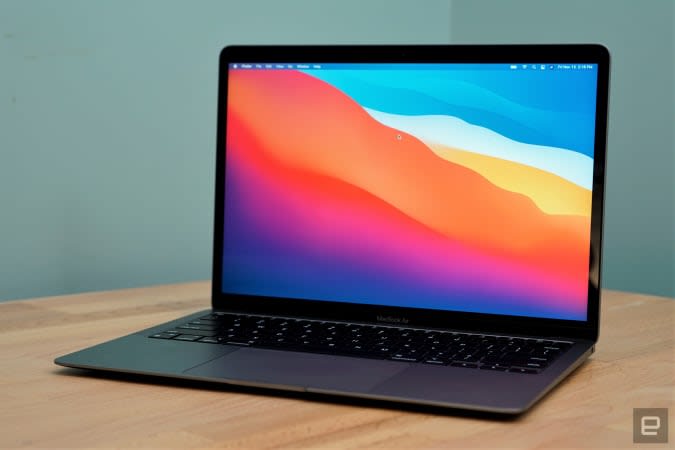 The latest MacBook Air M1 is down to $850 at Amazon, or $150 off its regular price. The 512GB model has the same discount, so you can grab it for $1,099. It's one of the best laptops for most people, and it's a great option for students going back to school. The Air M1 earned a score of 94 from us for its incredibly fast performance, excellent keyboard and trackpad, good battery life and lack of fan noise. Buy MacBook Air M1 (256GB) at Amazon - $850Buy MacBook Air M1 (512GB) at Amazon - $1,099 iPad Air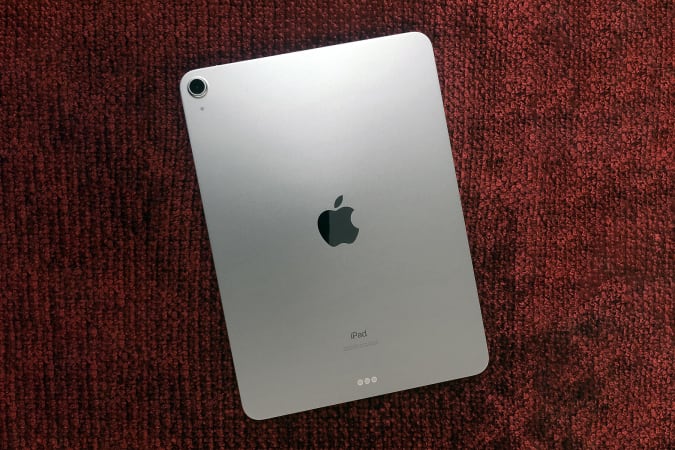 The latest iPad Air is down to the best price we've seen it, just $500 for the base model. That's $100 off its normal price and a great deal on what we think is the best iPad for most people. We gave the slab a score of 90 for its fast performance, speedy WiFi, healthy battery life and support for the second-generation Apple Pencil. Buy iPad Air (64GB) at Amazon - $500Buy iPad Air (256GB) at Amazon - $639 Buy iPad Air (64GB, cellular) at Amazon - $629Buy iPad Air (256GB, cellular) at Amazon - $780 AirPods Pro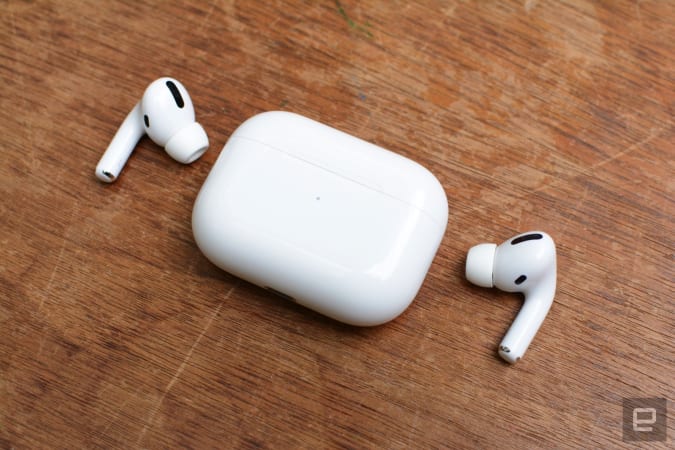 The AirPods Pro are back on sale for $190, or $60 off their normal price. While not a record low, it's still one of the best prices we've seen all year. The AirPods Pro earned a score of 87 for their improved audio quality, comfortable fit, solid ANC and IPX4 water resistance. Buy AirPods Pro at Amazon - $190 10.2-inch iPad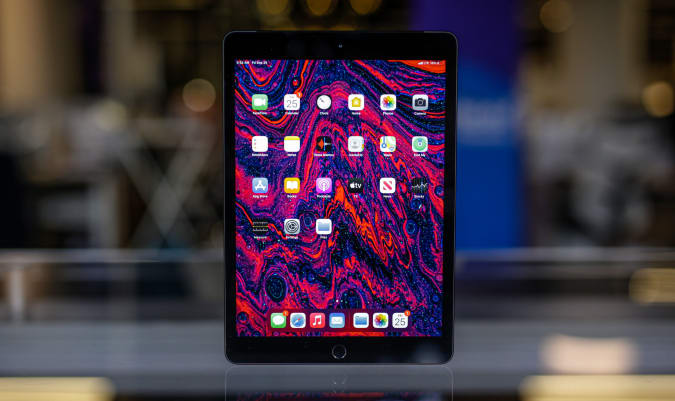 Apple's 10.2-inch iPad is still on sale for $299, or $30 off its normal price. It's arguably the best iPad for new tablet owners and we liked its improved performance, familiar design and support for the first-generation Apple Pencil. Buy 10.2-inch iPad at Amazon - $299 Mario Kart Live: Home CircuitNintendo Nintendo's Mario Kart Live: Home Circuit game for the Switch is down to $75, or $25 off its normal price. This add-on set lets you bring the action of Mario Kart into your real-life living room, creating your own racetracks and zooming around them using a tiny kart driven by either Mario or Luigi. Buy Mario Kart Live: Home Circuit at Amazon - $75 Samsung T7 SSD (500GB)Samsung Samsung's T7 portable SSD in 500GB is down to a record-low of $70, or $30 off its normal price. Other capacities are on sale, too — you can get a 1TB model for $150 and a 2TB model will set you back $300. We like these drives for their portability, durable design and speedy performance. Buy Samsung T7 (500GB) at Amazon - $70Buy Samsung T7 (1TB) at Amazon - $150Buy Samsung T7 (2TB) at Amazon - $300 Echo Buds (2nd-gen)Billy Steele/Engadget Amazon's latest Echo Buds are on sale for $80, which is a discount we saw last during Prime Day. You can also get the buds with their wireless charging case for only $100. We gave these a score of 80 for their improved sound quality, good ANC and smaller, comfortable design. Buy Echo Buds at Best Buy - $80Buy Echo Buds (wireless charging case) at Best Buy - $100 Echo Show 5 (1st-gen)Nicole Lee / Engadget Amazon's first-generation Echo Show 5 returned to its all-time-low price of $45 at Best Buy. If you're looking for a smart alarm clock of sorts, this is the best option if you already use Alexa as your primary voice assistant. The second-generation Echo Show 5, which came out recently, has a few minor differences, but we think the first-generation remains a solid buy — especially at half off its original price. Buy Echo Show 5 (1st-gen) at Best Buy - $45 Xbox Ultimate Game SaleXbox Microsoft's Xbox Ultimate Game Sale is still ongoing, knocking up to 80 percent off console and PC titles. On the console side, you can get FIFA 21 Ultimate Edition for $25, NBA 2K21 for $15, Battlefield 1 Revolution for $8 and more. And for PC gamers, you can get Gears 5 for $16, Yakuza: Like a Dragon for $36, Control for $15 and more. Shop Ultimate Game Sale at Microsoft Roku sale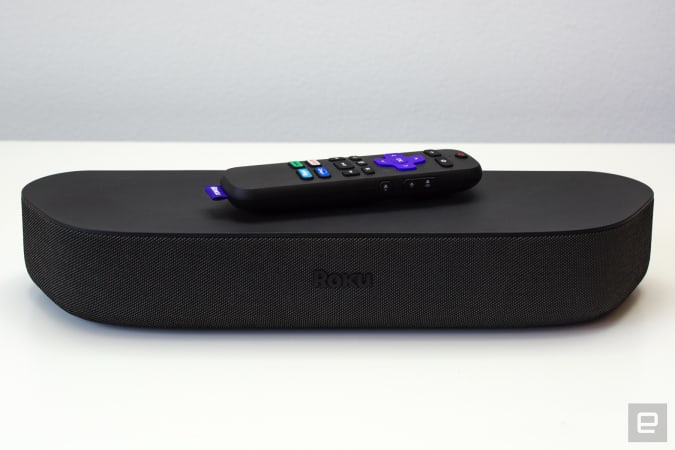 A bunch of Roku devices are on sale at Amazon, including the Roku Streambar, which is down to a record low of $99. This compact soundbar is a convenient gadget to get if you want to upgrade your home theater system without spending a ton of money. We gave it a score of 86 for its space-saving design, Dolby Audio support and built-in 4K streaming technology. If you want to spend even less, a handful of Roku streamers have been discounted, including the Express ($25) and the Streaming Stick+ ($39). Buy Roku Streambar at Amazon - $99Buy Roku Express at Amazon - $25Buy Roku Express 4K+ at Amazon - $29Buy Roku Streaming Stick+ at Amazon - $39 ThermoWorks Thermapen Mk4 The Thermapen Mk4 has been discounts to $69 as ThermoWorks makes room for the new Thermapen One thermometer. The Mk4 is the best instant-read thermometer we've used so far —the backlit display makes it easy to read in almost any situation and the display rotates depending on how you're holding the pen. Plus, you never have to remember to turn it off because the pen automatically turns on when you pick it up and will shut off after some time of no use. Buy Thermapen Mk4 at ThermoWorks - $69 Comic-Con 2022 sweepstakesThrough December 8, you can enter to win four-day passes to San Diego Comic-Con 2022. Along with the passes, you'll get access to a special preview night, reserved seating in Hall H, a personal concierge, a private tour of the Comic-Con Museum, dinner in Balboa Park and tickets to the "Night at the Comic-Con Museum" event. It's free to enter, but funds from this sweepstakes will go to the San Diego Comic Convention. Virgin Galactic sweepstakes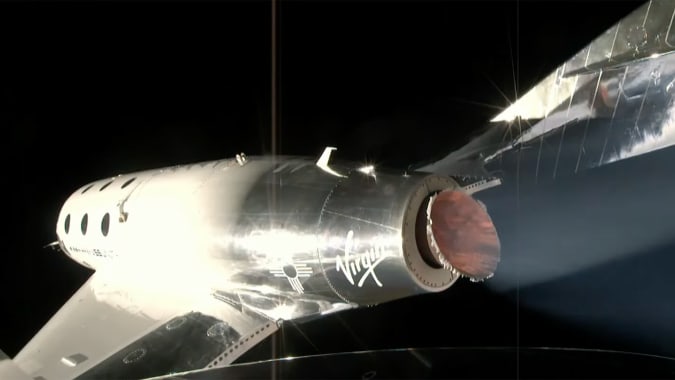 In this Omaze giveaway you can win two seats on one of the first Virgin Galactic flights to space. In addition, you'll go on a tour of Spaceport America in New Mexico with Richard Branson. You don't have to pay to enter, but funds from all paid entries will support Space for Humanity, an organization that hopes to make space more accessible for all. Gaming PC sweepstakes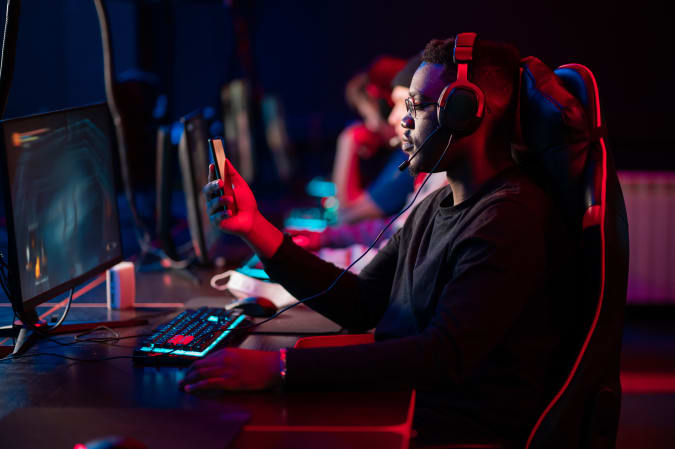 Omaze is giving away another $20,000 to build your ultimate gaming PC. This sweepstakes is free to enter, but funds donated with purchased entries will benefit Schools on Wheels, an organization that provides free tutoring and mentoring services to children experiencing homelessness across Southern California. Pricing and availability is subject to change. No donation or payment necessary to enter or win this sweepstakes.See official rules on Omaze. New tech dealsDJI OM4DJI's OM4 smartphone gimbal is $20 off right now, bringing it down to $129. It uses 3-axis stabilization to let you shoot smooth video with your smartphone, and it's new, magnetic quick-release makes it easy to snap your phone in and out of it. It also supports gesture control and Active Track 3.0, which lets you lock on to the subject you're filming with better accuracy. MirrorMirror's summer sale knocks $400 off its high-tech fitness system when using the code JULY400 at checkout. The discount breaks down to $150 off the mirror device itself, plus free delivery and installation. Just know that the sale is only on the product itself, not on the subscription needed to take the Mirror's fitness classes. Arturia Destination: Sound saleArturia has knocks 50 percent off all of its individual software titles through August 8. That means you can get some of our favorite music software, including Pigments and Analog Labs, for $99 each. This is a good opportunity to add new synths and other software instruments to your collection for less. NordVPNOne of our recommended VPNs is running a good sale on a two-year subscription. You can sign up for NordVPN for only $89 for the first two years, which comes out to $44.50 per year — and an additional summer promotion adds three free months on top of that. We like NordVPN for its speed, its no-logs policy, the thousands of servers it has to choose from and that one account supports up to six connected devices. Sign up for NordVPN (two years) - $89 Follow @EngadgetDeals on Twitter for the latest tech deals and buying advice. |
| Apple TV+’s 'Watch the Sound' is an invitation to start making music Posted: 30 Jul 2021 08:16 AM PDT If Gary Numan had heard a different sound the first time he encountered a synthesizer, we might not have had "Cars," "Are 'Friends' Electric?" or even Gary Numan (he was born Gary Webb before adopting his stage name). The New Wave movement might have been little more than a ripple, Synth Pop may have never happened and, in a roundabout way, Calvin Harris might never have known what we came for. But Numan did hear that all-important sound, the one that lit up his brain and switched him on to technology as a music-making tool, paving the way for electronic music to go mainstream. That's just one of many accidentally influential moments to be found in Watch the Sound with Mark Ronson — a documentary jaunt through the cornerstones of music technology that's streaming now on Apple TV+. Ronson is, perhaps, best known for his work with Amy Winehouse — a decidedly analog, brassy affair. But his love of technology is abundantly clear as Watch the Sound serves up easily digestible bites of musical history around key technological themes: Sampling, drum machines, synths and beyond. Along the way, Ronson casually drops in on such luminaries as Paul McCartney, Quest Love and the aforementioned Numan, along with contemporary artists such as Charlie XCX and King Princess. If the series doesn't inspire you to google around for a MIDI controller by the end of it then nothing ever will. Apple TV+ Unlike Netflix's fast-paced This is Pop, Watch the Sound leans more histrionic. Each episode starts with Ronson recounting his own first experience with whatever this episode is about (a sampler, distorted guitars and so on). He then spends time with artists that popularized that sound, asking pensive questions and generally nerding out about music as only someone with Ronson's wide palette of influences really can. This sense of a journey through Ronson's musical interests gives Watch the Sound a more intimate feel than This is Pop's more talking heads approach. "I think what's important is that there is a familiarity between the episodes, there is a kind of a guiding force. And that was always going to be Mark's personal experience," executive producer Mark Monroe told Engadget. This sense of "experience" is perhaps no more apparent when Ronson spends time with Sean Ono Lennon. Lennon talks candidly about his father's own struggle with the sound of his voice. He then adroitly reinvents a recording of Lennon senior with Harmony Engine (that Ronson describes as "autotune on steroids") in what turns out to be a surprisingly tender moment. Lennon junior is visibly moved by this brief yet intimate musical encounter. Of course, the show is about the machines as much as the people that made them important. Watching DJ Premier's absolute mastery of the MPC, for example, is as impressive as it is frustrating (at least to anyone else who's had a go on one and could barely peck out a beat). Later on, watching Ronson take a box cutter to a speaker cone with David Grohl feels like it should have been an outtake until... goddammit, why is he somehow good at everything? (You'll have to watch it to find out why they did this.) Other humorous moments are, perhaps, less intentional. Ronson at one point finds himself in a full miner's jumpsuit, and he's never looked so uncomfortable. In episode one, we enjoy a rare, albeit slight crack in his golden touch as he struggles to make anything remotely musical with autotune (he rectifies that later, naturally). If there were an enduring message in Watch the Sound (and many other series of its ilk) it's that perfection and talent are rarely what creates something magical. Most of the technology featured was either misused, misunderstood or reappropriated through necessity. Legends were born thereof and this is just how we do things now. It's refreshing, if not invigorating to know that you don't have to aspire to perfect pitch or even really have any formal musical training to be a pioneer. In fact, it's easy to convince yourself that knowing your scales might even hold you back sometimes if you find yourself trying to only play by the rules. This sentiment is solidified in the episode about synthesizers. Here, the cast of heroes is more at home with an oscilloscope than with an oboe. The band of misfits (and, let history show, many, many more women than are ever given credit) effectively reinvented what music could be from the ground up. Apple TV+ Monroe said that was something that became apparent during filming, too. "Digging into synthesizer and really kind of understanding what a disruptor it was … what an opportunity for the people on the outside of the music business … and not just to gain a foothold, but to become, you know, legendary." Even if you don't have an interest in how music is made, the show will have you jotting down the names of bands and songs you want to explore further and delight you with a sense of possibility. Or in my case, vindication. The episode on sampling recounts the abhorrent push-back that this new technology received. "That's not real music" someone remembers being told. If, like me, you grew up listening to Fear of a Black Planet and the countless artists it inspired, it's hard not to do a mental fist-pump to yourself for not being one of those jerks. By the end of the show, you might find yourself motivated to dig out that guitar from the loft, or fire up your laptop. Apple, it seems, knew this might be the case. To coincide with the show's launch, the company has created a "companion experience" for GarageBand via an exclusive Producer Pack. That said, once you discover how the Beastie Boys achieved their iconic vocal sound on "So What'Cha Want" or how Sonic Youth creatively used drumsticks on their guitars, you might realize you don't even need any fancy software to do something different. Watch the Sound with Mark Ronson premieres on Apple TV+ today. |
| NYC extends limits on food delivery app fees to February 2022 Posted: 30 Jul 2021 07:57 AM PDT New York City capped food delivery app fees to help restaurants survive the COVID-19 pandemic, and it's keeping those limits in place as the recovery begins. Gothamistreports the City Council has passed a bill that extends caps on delivery app fees until February 17th, 2022. The limits were due to expire in August and kept fees no higher than 15 percent for deliveries, plus 5 percent for other services. Apps could have charged up to 35 percent without the fee ceiling. Queens Council Member Francisco Moya claimed a return to higher fees would "completely" hobble businesses just starting to recover from the pandemic. Other bills passed at the same time require apps to get written approval before listing businesses and to share customer data with restaurants. Delivery services have faced criticism, lawsuits and legislation after listing restaurants in their apps without permission. The app creators have opposed New York City's new measures. GrubHub claimed the caps were "arbitrary price controls" that would allegedly damage businesses and the economy. DoorDash, meanwhile, suggested that data sharing with restaurants should be opt-in rather than enabled by default. The company was determined to "protect the privacy" of users, a spokesperson said. The companies haven't been completely opposed to reduced fees. DoorDash, GrubHub, Uber Eats and others started cutting and waiving some fees as the pandemic began. Their concern, as you might guess, is that these caps might become permanent and restrict the apps' long-term viability. It's not an unfounded fear — San Francisco's Board of Supervisors recently voted to permanently cap delivery app fees in the city. At the same time, there's little doubt that restaurants are eager to avoid a return to pre-pandemic fees. Some eateries were only reluctantly listing themselves in these apps due to the large fees, and in many cases have offered incentives to customers who order directly. While NYC's extension won't necessarily ensure a given restaurant's survival, it could help that restaurant maintain familiar profits or keep prices in check. |
| Amazon handed record $888 million fine from EU data privacy watchdog Posted: 30 Jul 2021 06:04 AM PDT Amazon has been handed its largest ever privacy fine in the EU by Luxembourg's data watchdog. The CNPD fined the company €746 million ($888 million) on July 16th for violating the bloc's strict data privacy laws, known as GDPR. Amazon disclosed the ruling in an SEC filing on Friday in which it slammed the decision as baseless, adding that it intended to defend itself "vigorously in this matter." "There has been no data breach, and no customer data has been exposed to any third party," Amazon told Bloomberg. "These facts are undisputed. We strongly disagree with the CNPD's ruling." It added that it plans to appeal the decision. Amazon has its EU headquarters in Luxembourg, tasking the local data regulator with overseeing its compliance. The penalty is the result of a 2018 complaint by French privacy rights group La Quadrature du Net, which filed numerous lawsuits against Big Tech companies on the behalf of 12,000 people shortly after the GDPR was established that year. Among those was a case involving Google's Android operating system that led to France's CNIL regulator slapping the search giant with a $57 million fine in January, 2019 — the biggest GDPR fine to date. The watchdog ruled that the company had violated the GDPR due to its failure to obtain legal consent for data collection related to its ad targeting practices. The record penalty comes amid heightened scrutiny of Amazon's business in Europe. Its use of data is also at the heart of the EU's antitrust investigation. Following a year-long probe, officials in November reached a preliminary decision that Amazon had breached competition rules by using third-party seller data to boost its own products. At the same time, they launched a second investigation into its alleged preferential treatment of its own products on its site and those of its partners. |
| Engadget Podcast: Activision’s walkout and toxicity in gaming Posted: 30 Jul 2021 05:30 AM PDT This week, Cherlynn and Devindra dive into the toxic mess at Activision Blizzard with Senior Editor Jessica Conditt. California is suing the company over its frat boy culture, something we've seen at many gaming companies over the years. What's actually going on, and what does it mean for the gaming industry as a whole? Tune in for our thoughts! Also, we chat about Facebook's metaverse ambitions, some new chip plans for Intel and… Xbox Krispy Kreme donuts. Listen below, or subscribe on your podcast app of choice. If you've got suggestions or topics you'd like covered on the show, be sure to email us or drop a note in the comments! And be sure to check out our other podcasts, the Morning After and Engadget News!
|
| Two red objects between Mars and Jupiter may explain how the solar system formed Posted: 30 Jul 2021 04:55 AM PDT A group of scientists has discovered two unusually red objects in the asteroid belt between Jupiter and Mars, and they may have originated from farther in the solar system. These objects — called 203 Pompeja and 269 Justitia — are redder than the reddest known objects in the asteroid belt and may have migrated to the area from beyond Neptune. If that's true, then they could provide insight into the chaos of the early solar system and into how the solar system as we know it today came to be. The team led by JAXA's Sunao Hasegawa identified the objects through observations collected at the Infra-red Telescope Facility and Seoul National University Astronomical Observatory, according to the paper they published. As The New York Times points out, most objects in the inner solar system tend to reflect blue light, because they're devoid of or have very little organic materials. Objects from the outer solar system such as the Kuiper belt, however, tend to be redder. That's because they have a lot of organics like carbon and methane, which may have been the building blocks of our planet. As you may know, the Kuiper belt is the region extending from the orbit of Neptune where you can find remnants of our solar system's formation. If Pompeja and Justitia truly were transplants from beyond Nepture, then they'd serve as evidence for the hypothesis that a fraction of the asteroids between Jupiter and Mars came from the Kuiper belt. They'd also support the set of theories, called the Nice Model, on how our gas giants settled into their orbits. The Nice model says our giant planets formed closer to the Sun until an instability forced Neptune, Uranus and Saturn to move outwards and Jupiter to move inwards. The event would've caused asteroids rich in organic materials to scatter and move around the solar system. Of course, more observations and evidence are needed to be able to prove that the two objects are from the Kuiper belt. The good thing is that since the asteroid belt is much closer to us than Neptune, it would take a spacecraft less time to reach them if ever Earth's space agencies decide to send a probe to study them more closely. |
| You are subscribed to email updates from https://www.engadget.com/. To stop receiving these emails, you may unsubscribe now. | Email delivery powered by Google |
| Google, 1600 Amphitheatre Parkway, Mountain View, CA 94043, United States | |